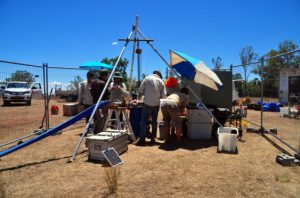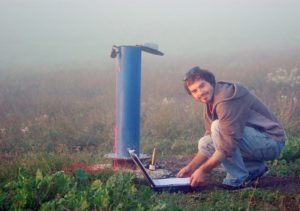Researchers have discovered a cheaper and more efficient method of managing groundwater that could provide a breakthrough for governments grappling with drought.

UNSW water engineers have discovered a new way to automate monitoring of groundwater that is cheaper and substantially faster than the traditional manual process.
The new process could be a “game changer” in water management, researchers say, because it gives authorities a more accurate indication of how much water there is in boreholes and importantly, how this changes over time – enabling them to manage water more sustainably.
The method could help authorities improve the way they manage water during and after drought while potentially preventing catastrophic water events like that at the Murray Darling Basin by providing a more realistic indication of how much water is safe to extract, Associate Professor Martin Andersen, co-author of the research, to be published in Reviews of Geophysics, told Government News.
The new method involves drilling a small hole into the ground and inserting an automated pressure logger which measures groundwater level changes from earth and atmospheric tides.
“It’s a method that looks at how earth tides and atmospheric tides change the water levels on a small scale so when the moon and sun pass across and we pass around the sun, gravity pulls a bit on the surface of the earth and causes small changes in water levels,” Professor Andersen said.
“It’s the same when the atmospheric pressures change, the highs and lows travelling across landscapes also put pressure on the surface which causes small microscopic changes in water levels.”

New method improves water management
The method gives substantially more information than the traditional manual technique, Professor Andersen says, giving authorities much more certainty around safe water management.
“It will provide a tool for (governments) to be able to better manage water allocations. If they can update groundwater models with more realistic numbers they’d be able to (estimate whether) drops in water levels are acceptable,” he said.
“If we can make predictions more accurate it’ll be easier for us to say whether an amount of groundwater abstraction is acceptable or not.”
The method could help improve water management as Australia grapples with ongoing drought situations, Professor Andersen said.
“The more information we have the better we can manage. That’s got to be the core of water management: to have as much information as possible. It’s a little bit equivalent to having a chemical plant, where you are trying to manage a plant without knowing the temperature and pressure of the processes. You would never do that,” he said.
Under current methods, bore water measuring is a “time intensive and quite costly” process that takes up to several months involving drilling a large hole with a team of three people and using a rig to pump water out.

The new process not only rapidly speeds up the process, but allows authorities to measure changing water levels over time by monitoring boreholes remotely without having to send more staff to pump the bores for every additional measurement.
“It’s automating the process but also taking advantage of the thousands of monitoring bores out there that are already installed. It’s an order of magnitude cheaper to install a monitoring borehole and instrument it with pressure sensors as opposed to a big pumping bore,” he said.
Unlike the new method, the existing process can’t give authorities real-time information, forcing some to resort to ‘textbook values’ instead of actual water measurements, resulting in potentially sketchy estimates.
“If you overestimate the storage in these types of environments you are led to believe more water is available than is actually the case,” he said.
As Australia grapples with water resource challenges, Professor Andersen says he hopes the breakthrough method will become industry-standard, enabling governments and industry to manage water sustainably into the future.
Comment below to have your say on this story.
If you have a news story or tip-off, get in touch at editorial@governmentnews.com.au.
Sign up to the Government News newsletter




Leave a Reply